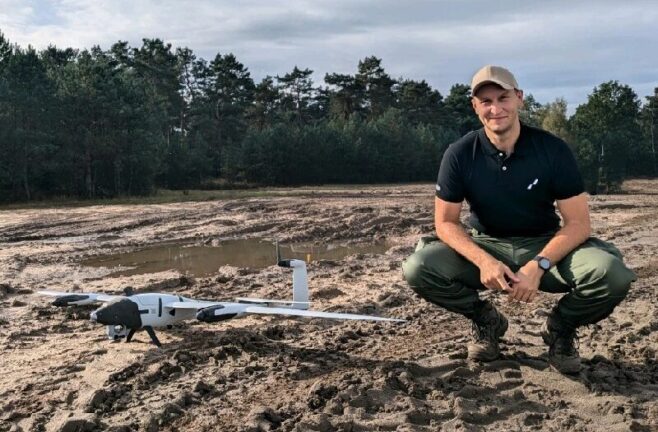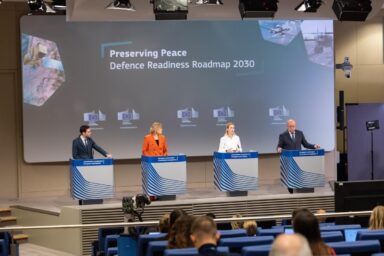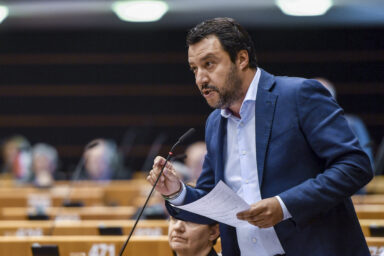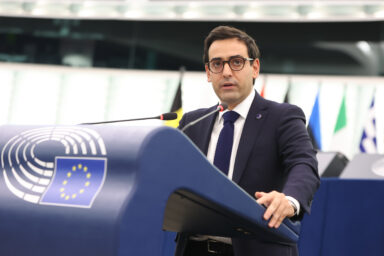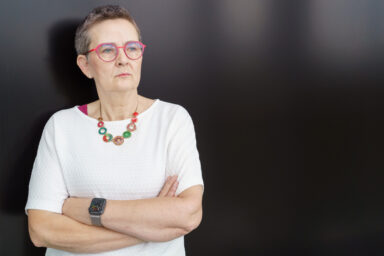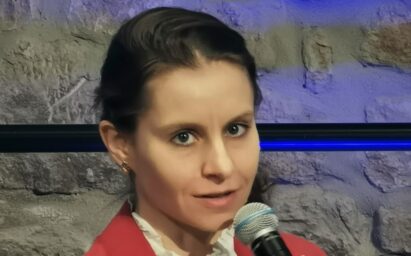In every industrialist’s mind, there is a question lurking: what will constitute a real “drone wall” in Brussels eyes? Marco Lotz of Quantum Systems, a fast-growing German-Ukrainian drone producer, shared his ideas on the topic with EU Perspectives. For the European Union, in his opinion, timing still is the number one challenge.
Quantum Systems has been rapidly establishing a strong European presence thanks to its civilian and defence expertise. Speaking to EU Perspectives, Mr Lotz highlighted that the company has been strengthening partnerships in many EU countries like Romania and Spain. In general, however, the European system remains a tough nut to crack, he said.
“We service capability development contracts funded by European grants, but the European Union is still a complex landscape for a company of our size,” Mr Lotz explained. The main challenge, he pointed out, is timing: while innovation cycles in Ukraine take only five weeks, an European Defence Fund (EDF) tender can last two to three years. Additionally, contracts often favour established players, making it difficult for younger companies to break into the defence sector.
The Ukraine crisis has shifted Quantum Systems’ focus from a 70/30 civilian-to-defence ratio to a stronger emphasis on defence. The company has deliberately made its supply chain Europe-centric and China-free, enabling rapid scaling in response to rising defence spending, particularly in drones.
You might be interested
NATO initiatives
Regarding NATO initiatives like Eastern Sentry and Baltic Sentry, Mr Lotz clarifies that their role will focus on unmanned systems, as “the first contact along the Eastern front will always be unmanned.” However, projects like the “drone wall” remain conceptually vague, lacking a clear procurement timeline and operational specifications. “The drone wall again lacks a certain conceptual clarity at this moment,” he said.
Mr Lotz appreciates the EU’s focus on drones as a third priority, after ammunition and air defence. However, he also emphasised that “The drone wall is still a concept lacking clarity: what technological layers, operational capabilities, and concrete objectives is it to feature?” He believes NATO will define common objectives, while member states will execute specific procurements.
The drone wall is still a concept lacking clarity: what technological layers, operational capabilities, and concrete objectives are intended? — Marco Lotz, business development and government relations manager at Quantum Systems
When it comes to the use of AI in drones, Mr Lotz highlights two major trends. Increasing computing power in smaller systems is one, multi-drone operation conducted by a single operator is the other. These developments will enable more autonomous and efficient operations, transforming the concept of the drone wall and operational capability on the ground. “Today, one operator usually manages one drone, but in the future it will be possible to orchestrate multiple systems from a single station in an intuitive way, almost like a video game,” he explains.

